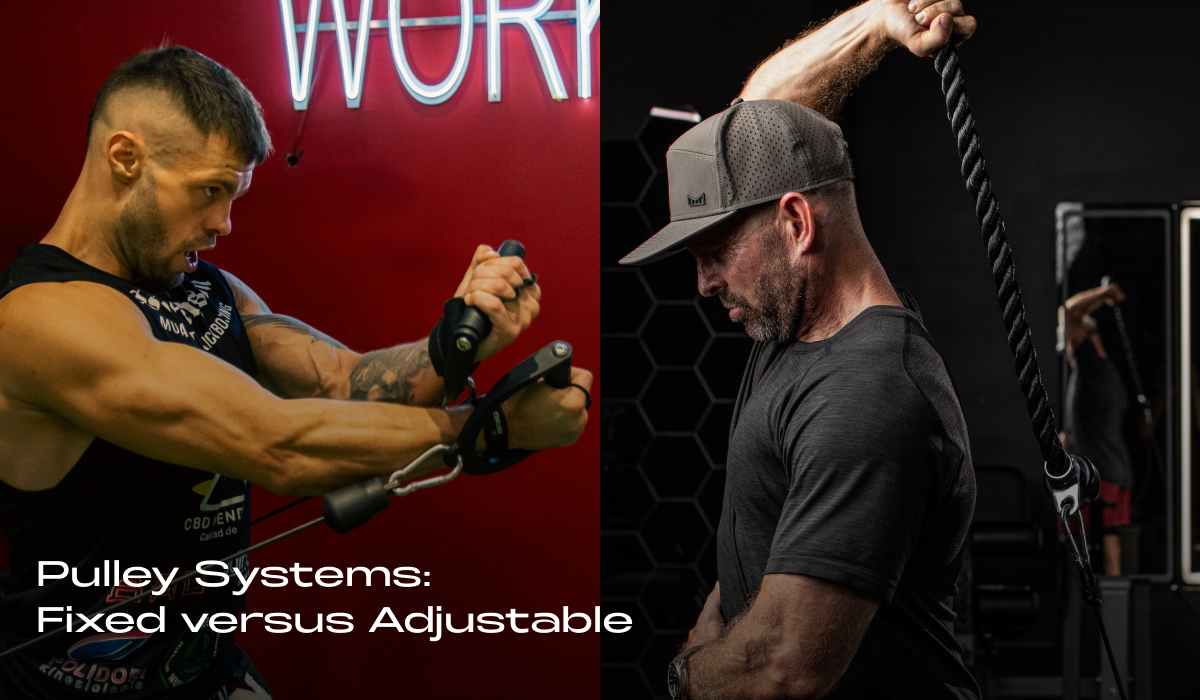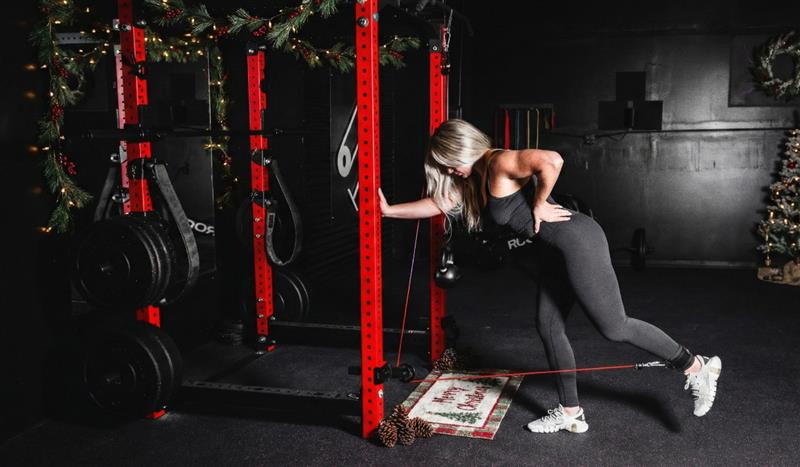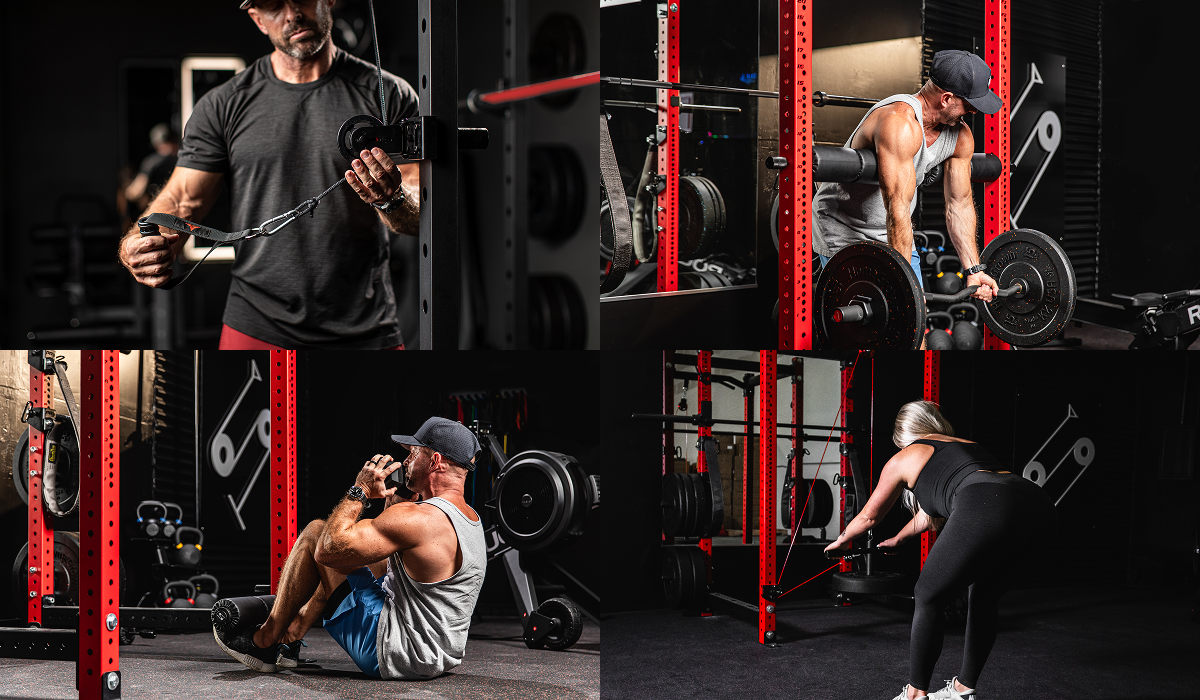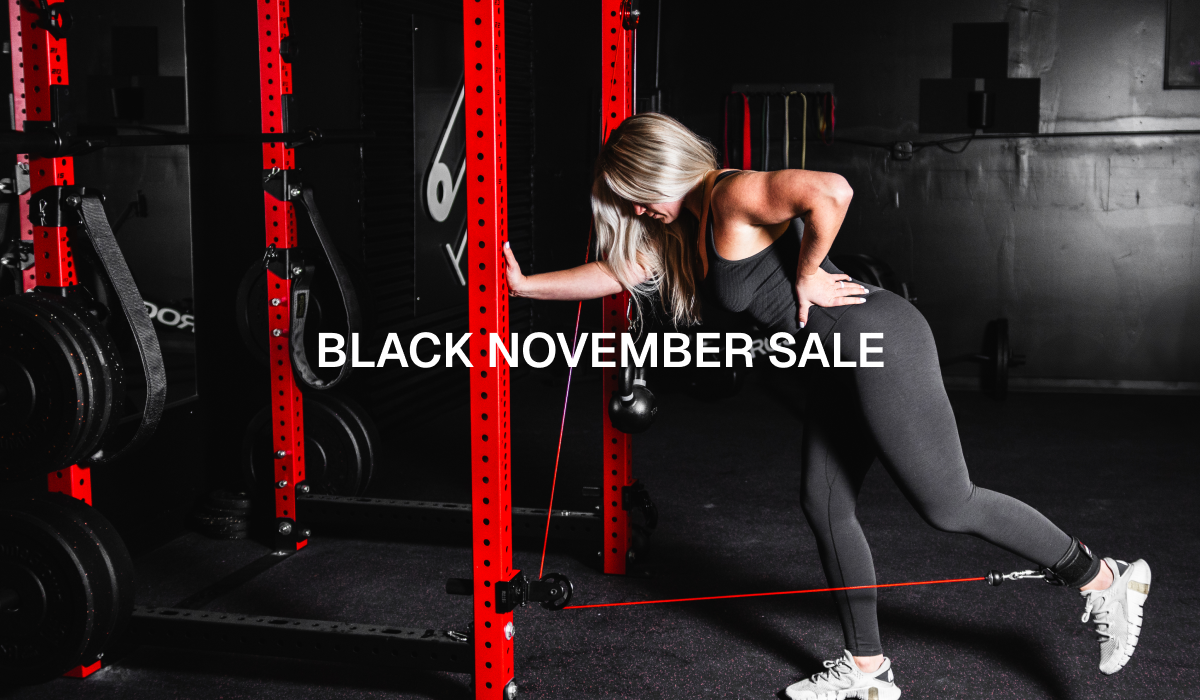Pulley systems are a great way for one to train flexibly and efficiently in strength training, mobility enhancement, or even mere fitness. These pulleys can be made to give concentrated resistance suitable for a wide range of exercises, both in a commercial workout and home-based ones.
The big question, though, goes to if you want to use a fixed pulley system versus an adjustable one.
In this blog, we will break down some of the differences between a fixed and an adjustable pulley system to help you choose one that best suits your fitness objectives.
The Basics of Pulley Systems
First and foremost, let's establish what a pulley system is and how it works before comparing a fixed to an adjustable system. Inside, there is usually a rope or cable that goes over the wheel. That is the beauty of this system: you are allowed to lift or pull any load with less effort than you normally do.
They are quite ideal for resistance training and physical therapy as the action they provide in your exercises is always controlled and smooth, offering minimal risk of injury with maximum muscle engagement.
In a workout routine, an individual encounters mainly two types of pulley systems: fixed pulley systems and adjustable pulley systems.
Fixed Pulley Systems: In fixed pulley systems, the name itself describes what it is, which is essentially the pulley wheel attached to a fixed point in the form of a wall or ceiling. Most times, it's mounted to at least one of those pieces of equipment in the gym.
Adjustable Pulley Systems: With adjustable pulleys, matters have gotten much better since you can adjust the position of the pulley wheel and the angle of resistance so that the variety that is attached to the exercise is immense.
Benefits of Fixed Pulley Systems
Fixed pulleys have been the traditional choice in most gyms, not to mention even in home set-ups. Here's why they remain so popular:
Ease of Use/Simplicity: The single biggest advantage existing with fixed pulley systems is their simplicity.
Most of the time, they will be easy to set up and require only a few mid-workout adjustments.
You can pretty much jump right into your routine without really needing to make any angle or configuration changes beyond that initial setup.
Smooth and Controlled Motions: Since the pulley does not move, it really only offers very consistent and controlled movement paths. This actually makes it a great selection for the inexperienced exerciser or for individuals rehabilitating from an injury since it limits the movement to a safe, predetermined path.
Great for Isolation Exercises: Fixed pulley systems work well when there are those sorts of exercises that require muscles to be isolated. Movements such as the tricep pushdown, bicep curl, or cable chest fly are well executed in fixed systems, which enable you to target that particular area without being bothered by balancing or coordinating movements.
Cheaper: These are a great deal more affordable than adjustable pulley systems.
If you're looking to get into cable training in your home gym and you're on a budget, this type of pulley system can be perfect for your needs.
Disadvantages of Fixed Pulley Systems
While fixed pulley systems can be quite good, there are a couple of very real downsides to using them:
One major downfall to fixed pulleys is that they require more adjustment in order to vary the angles of operation.
You are doomed to exercise on the same path and have limited choices during your workout.
Not indicated for Functional Training: Exercises in training are, in essence, more dynamic movements which, by and large, are not part of daily activities. In this light, a static pulley system cannot be as liberal for application in exercises that require more than one plane of movement, such as rotational movements or pulls in diagonal directions.
Benefits of Adjustable Pulley Systems
Some can be even more versatile, with greater ranges of adjustability. Here's why adjustable systems could better fit advanced users or those who want to expand their repertoire of workouts:
More Flexibility: The pulling structure is extendable to change the height and angle of the pulley; hence, it allows smooth motion in carrying out a wide range of exercises targeting various muscles of the body. Versatility provides an option for full-body workouts or muscle isolation, whichever the case may be.
These are great for functional training: rotational, diagonal, multi-planar movements-you name it. Most natural movements can be emulated and thus should strengthen you, helping in everyday life or certain sports.
Progressives Resistance: Most pulley systems with adjustable features provide for smoother, finer increases in resistance and are important to progress, the key factor involved in the building of strength. You can finely tune both the angle and the weight, thus providing an easier way to be challenged as you progress.
Smart for Small Spaces: Most of these adjustable pulley systems have been designed with the compact, at-home gym in mind. Most of them, if not all, have various settings that best fit a broad range of exercises without requiring too much space or equipment. Hence, they are ideal for those with limited room who would still like a full-body workout solution.
Disadvantages of Adjustable Pulley Systems
While there is variety and flexibility with any of the adjustable pulley systems, there may be some negative factors: Higher Learning Curve: An out-of-the-box adjustable pulley system will have a higher learning curve simply because there are so many ways you can adjust it.
While the number of choices might overwhelm the absolute beginner, better form will result from a better setup of the equipment.
More Expensive: Adjustable pulleys are much pricier than fixed ones. With a small budget, this would be the reason to consider.
Requires too Frequent Adjustments: While as much adjustability in an adjustable pulley system may be an added advantage, it can be quite disadvantageous to people seeking to go faster and have hassle-free workouts. The need to readjust the pulley every time between sets can delay your workout and get quite irritating after some time.
Which Pulley System Is Right for You?
Your goals from a workout, your experience level, and available space will absolutely determine whether or not you use either a fixed or an adjustable pulley system.
For those who are beginners or concerned with the isolation of specific muscles, a fixed pulley system is ideal in view of the fact that it is easy to use, inexpensive, and relatively complication-free.
An adjustable pulley system allows for the advanced user, functional trainer, or those with space issues; this provides the necessary flexibility and adaptability to make it a far more dynamic and all-around workout.
The results of both pulley systems are fantastic once put into practice accordingly. Knowing their positives and negatives creates a place from which a person can better determine which one best fits their journey into fitness.






Share:
Safe and Effective Exercises for Pregnant Ladies with Pulley Systems
Symmetry Created: Muscle Development the Return of Two Home Gym Pulley Systems